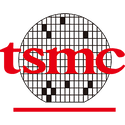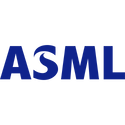
TSMC Arizona Operations Only 10% More Expensive Than Taiwanese Fab Operations
A recent study by TechInsights is reshaping the narrative around the cost of semiconductor manufacturing in the United States. According to the survey, processing a 300 mm wafer at TSMC's Fab 21 in Phoenix, Arizona, is only about 10% more expensive than similar operations in Taiwan. This insight challenges earlier assumptions based on TSMC founder Morris Chang's comments, which suggested that high fab-building expenses in Arizona made US chip production financially impractical. G. Dan Hutcheson of TechInsights highlighted that the observed cost difference largely reflects the expenses associated with establishing a brand-new facility. "It costs TSMC less than 10% more to process a 300 mm wafer in Arizona than the same wafer made in Taiwan," he explained. The initial higher costs stem from constructing a fab in an unfamiliar market with a new, sometimes unskilled workforce—a scenario not typical for mature manufacturing sites.
A significant portion of the wafer production cost is driven by equipment, which accounts for well over two-thirds of the total expenses. Leading equipment providers like ASML, Applied Materials, and Lam Research charge similar prices globally, effectively neutralizing geographic disparities. Although US labor costs are higher than in Taiwan, the heavy automation in modern fabs means that labor represents less than 2% of the overall cost. Additional logistics for Fab 21, including the return of wafers to Taiwan for dicing, testing, and packaging, add complexity but only minimally affect the overall expense. With plans to expand domestic packaging capabilities, TSMC's approach is proving to be strategically sound. This fresh perspective suggests that the apparent high cost of US fab construction has been exaggerated. TSMC's $100B investment in American semiconductor manufacturing reflects a calculated decision informed by detailed cost analysis—demonstrating that location-based differences become less significant when the equipment dominates expenses.
A significant portion of the wafer production cost is driven by equipment, which accounts for well over two-thirds of the total expenses. Leading equipment providers like ASML, Applied Materials, and Lam Research charge similar prices globally, effectively neutralizing geographic disparities. Although US labor costs are higher than in Taiwan, the heavy automation in modern fabs means that labor represents less than 2% of the overall cost. Additional logistics for Fab 21, including the return of wafers to Taiwan for dicing, testing, and packaging, add complexity but only minimally affect the overall expense. With plans to expand domestic packaging capabilities, TSMC's approach is proving to be strategically sound. This fresh perspective suggests that the apparent high cost of US fab construction has been exaggerated. TSMC's $100B investment in American semiconductor manufacturing reflects a calculated decision informed by detailed cost analysis—demonstrating that location-based differences become less significant when the equipment dominates expenses.












